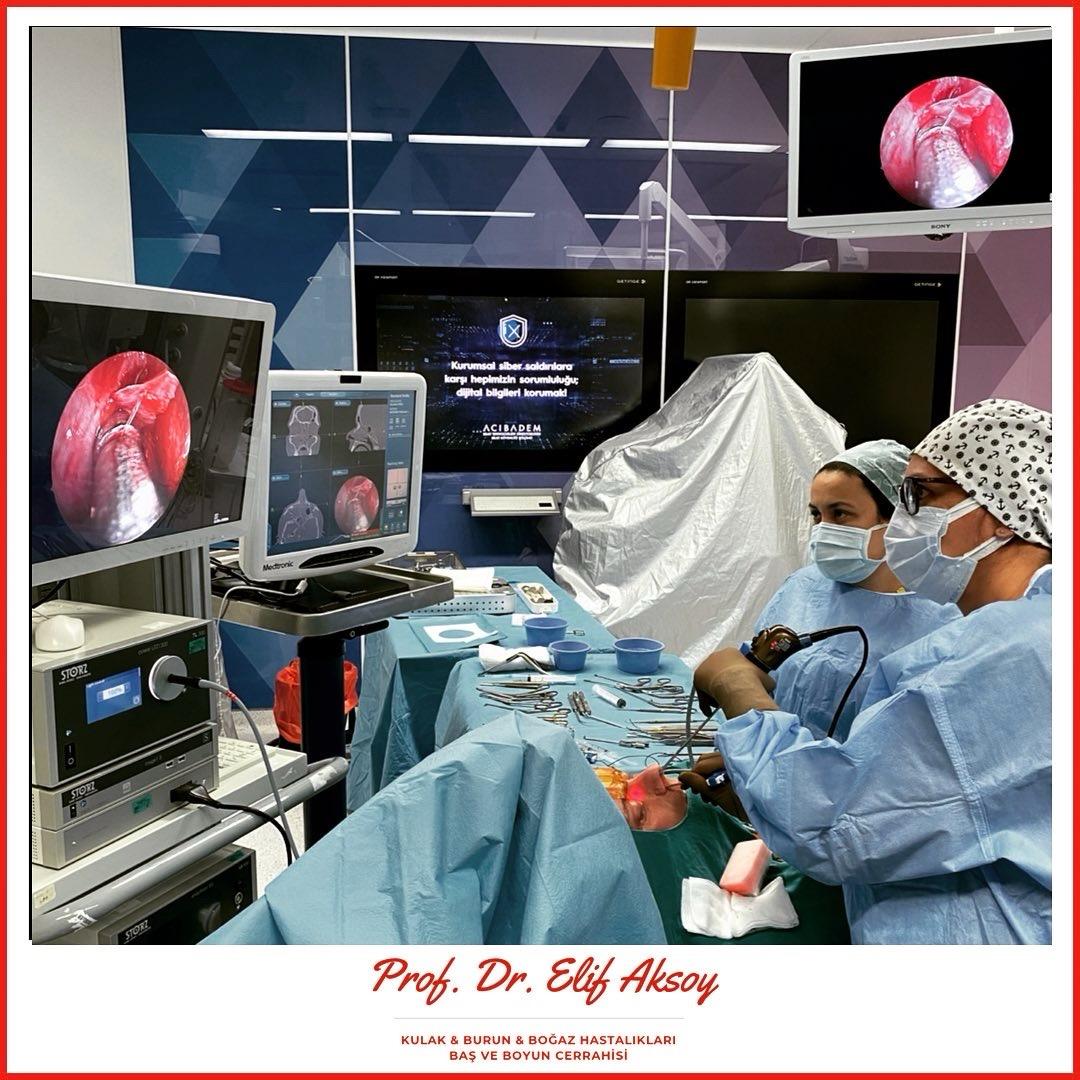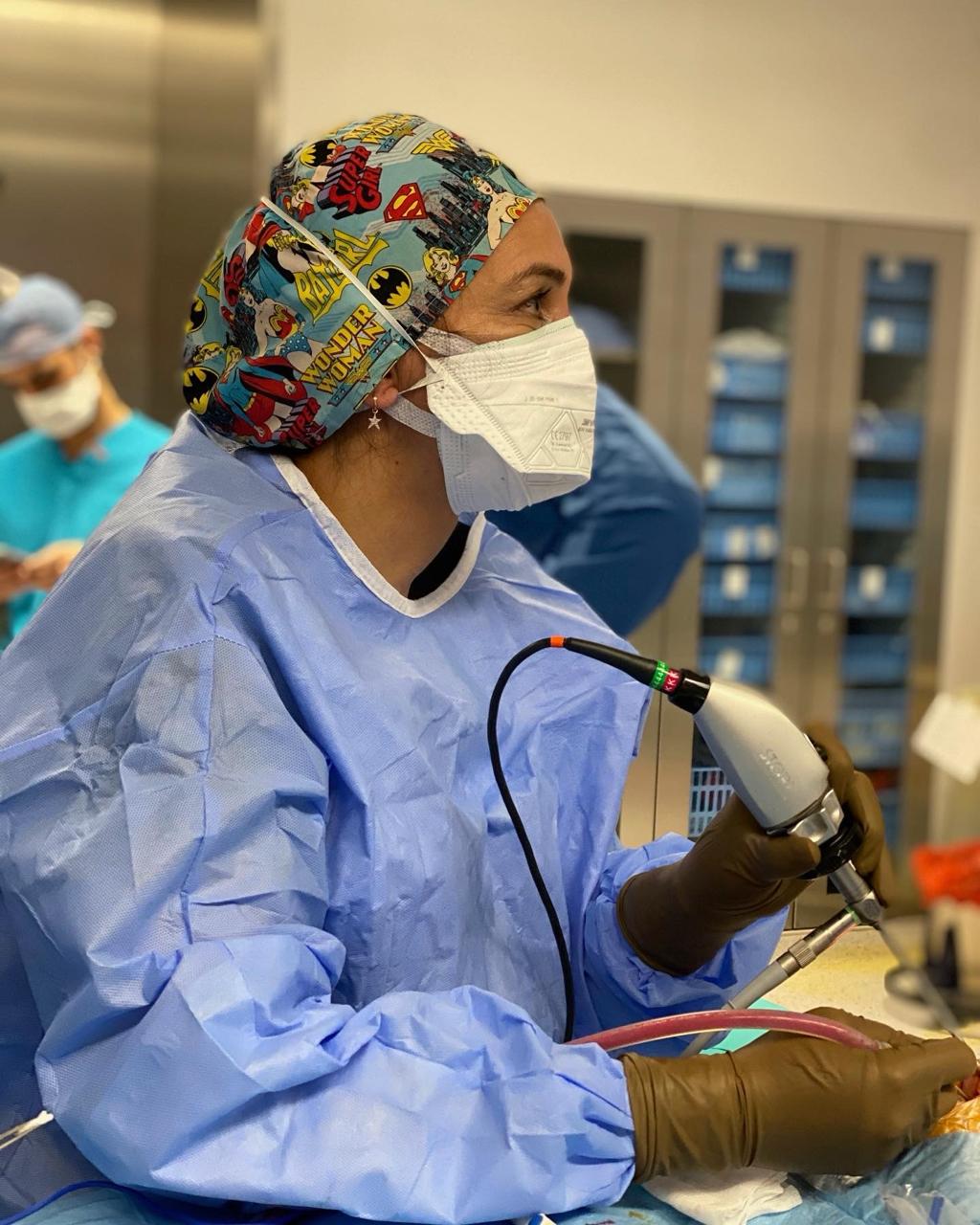What Is Endoscopic Sinus Surgery (ESS)?
Endoscopic Sinus Surgery (ESS) is a minimally invasive procedure used in the treatment of nasal and sinus diseases. This method is applied to open blocked sinus pathways, remove inflamed tissue, and improve the patient’s breathing.
Compared to traditional sinus surgeries, ESS does not require external incisions. It is performed using a thin camera called an endoscope and special surgical instruments inserted through the nose. This allows for more precise and safer intervention with a shorter recovery time.
When Is Endoscopic Sinus Surgery Performed?
ESS is used in patients who do not respond to medical therapy or suffer from chronic sinus blockage. Common indications include:
- Chronic rhinosinusitis: Sinus infections lasting longer than 12 weeks and unresponsive to medications.
- Nasal polyps: Growths that block the airways in the nose and sinuses.
- Fungal infections: Infections caused by fungi in the sinuses (e.g., allergic fungal rhinosinusitis).
- Sinus tumors: Removal of benign or malignant tumors.
- Sinus blockage due to septal deviation: To restore proper sinus drainage caused by deviated nasal septum.
- Supportive in eye and skull base surgeries: To provide access through the sinuses for some ophthalmologic and neurosurgical procedures.
What Is Navigation-Guided Endoscopic Sinus Surgery?
During ESS, navigation technology helps the surgeon visualize and guide through complex sinus anatomy. It is especially beneficial in patients with intricate anatomy or those who have had previous sinus surgeries.
- Navigation-guided ESS maps out important structures in the sinuses, enhancing surgical precision.
- It reduces the risk of complications in areas near the eyes or skull base.
- With the help of CT scans and real-time navigation, the surgery becomes safer and more accurate.
Thanks to this technology, infected or blocked tissue in sensitive areas can be removed safely, and maximum drainage can be restored.

Advantages of Endoscopic Sinus Surgery
- Minimally invasive: No external incision is made, unlike open surgeries.
- Shorter recovery time: Patients can return to daily activities within a few days.
- Less bleeding and tissue trauma: The delicate sinus tissues are preserved.
- Increased safety with navigation support: Especially in areas near the eyes and brain.
- Restores natural sinus function: The natural drainage pathways are preserved, promoting long-term nasal health.
Preoperative Preparation
Before ESS, patients undergo a detailed examination and imaging to assess the sinus anatomy.
- Nasal and sinus endoscopy: The nasal passages are evaluated using an endoscope.
- CT scan: Provides detailed images of the sinuses.
- Allergy testing: Checks for underlying allergic conditions.
Blood thinners like Aspirin and Warfarin may need to be stopped under medical supervision before the operation.
Surgical Procedure
Local or General Anesthesia:
- The procedure is typically performed under general anesthesia, though local anesthesia may be used in select cases.
Endoscopic Entry:
- An endoscope is inserted through the nose to visualize the sinuses.
Opening of Blocked Sinus Passages:
- Swollen or inflamed tissue is removed to reopen natural drainage pathways.
Removal of Polyps or Infected Tissue:
- If necessary, polyps or infected tissue inside the sinuses are excised.
Nasal Packing:
- Biodegradable nasal packing is often placed to support healing after surgery.
Surgical time varies depending on the severity of the condition, and most patients are discharged the next day.
Postoperative Care: Things to Consider
- Nasal congestion is normal in the first few days; saline nasal irrigation is recommended.
- Avoid heavy exercise and nasal trauma.
- Do not blow your nose for at least a week.
- Avoid smoking and irritating chemicals.
- Use moisturizing sprays prescribed by your doctor to prevent crusting and dryness inside the nose.
Full recovery usually occurs within 2–4 weeks. Patients are monitored and nasal cleanings are performed during follow-up visits.
Success Rate of Endoscopic Sinus Surgery
- ESS provides 80–90% success in appropriately selected patients.
- Postoperative care and compliance with medical treatment improve long-term outcomes.
- In patients with coexisting conditions like allergies, asthma, or fungal infections, ongoing medical therapy is required for lasting results.
Is Endoscopic Sinus Surgery Right for You?
If you have chronic sinusitis, nasal congestion, or recurrent infections despite medical treatment, ESS may be a suitable option for you.
We offer personalized treatment plans tailored to your condition. Please contact our clinic for more information and appointments.
Prof. Dr. Elif Aksoy
ENT Specialist – Endoscopic Sinus Surgery and Swallowing Disorders



